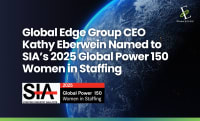A Perspective on the Blooming Renewable Energy Industry in East Southern Africa
Industry
2 January 2024
Stephanie Taylor

East Southern Africa is undergoing a transformative journey towards sustainability, as the region embraces the winds of change blowing through the renewable energy sector. With an increasing focus on reducing carbon emissions and fostering economic growth, nations in this part of the continent are investing heavily in renewable energy sources. This shift not only holds the promise of a greener future but also presents significant opportunities for economic development and energy security.
Countries such as Mozambique, South Africa, Kenya, Malawi, Angola, Zambia, and Sudan are endowed with an abundance of natural resources that make it an ideal location for harnessing renewable energy. Solar and wind resources are prolific, presenting an opportunity for the region to become a powerhouse in clean energy generation. The arid landscapes of the Eastern Cape and KwaZulu-Natal are perfect for solar farms, while the expansive coastal areas offer excellent potential for wind energy projects.
Governments across the region recognize the need to diversify their energy mix, reduce dependence on fossil fuels, and mitigate the impact of climate change. As a result, ambitious initiatives and policies have been put in place to accelerate the adoption of renewable energy technologies.
One of the standout contributors to the region’s renewable energy landscape is the harnessing of wind power. Countries like Kenya, Tanzania, and South Africa have made significant strides in developing wind farms that leverage the abundant wind resources in these areas. These projects not only generate clean electricity but also contribute to job creation and technology transfer.
In Mozambique, the Zambezi River, one of Africa’s major waterways, provides an ideal setting for large-scale hydropower projects. The Cahora Bassa Dam, a flagship hydroelectric facility, has generated clean electricity since the 1970s. Recent years have seen an increased focus on expanding hydropower capacity, with projects like the Mphanda Nkuwa Dam in the pipeline, aiming to further solidify Mozambique’s position as a regional hydropower hub.
Kenya, for instance, has emerged as a leader in wind energy with the Lake Turkana Wind Power Project. Situated in the Turkana region, this mega-project stands as the largest wind farm in Africa, producing a substantial amount of electricity for the national grid. The successful implementation of such initiatives serves as a beacon for other nations in the region, inspiring them to tap into their wind potential.
These initiatives not only provide clean energy but also address energy poverty, bringing electricity to off-grid communities and empowering them with newfound opportunities for education, healthcare, and economic development.
While the growth of the renewable energy sector in East Southern Africa is promising, it is not without challenges. Infrastructure limitations, financing hurdles, and regulatory uncertainties impede the full-scale deployment of renewable projects. However, these challenges also present opportunities for collaboration, innovation, and the development of tailored solutions to address the specific needs of the region.
International partnerships and investments play a crucial role in overcoming these challenges. By fostering collaboration between governments, private sectors, and international organizations, East Southern Africa can accelerate the transition to a sustainable and resilient energy infrastructure.
Wind and solar power projects are not only reshaping the energy landscape but also contributing to economic growth and social development. As the region continues to harness the winds of change, the prospects for a greener and more prosperous East Southern Africa are brighter than ever before.

